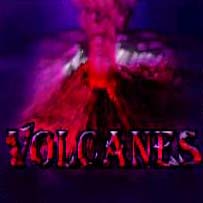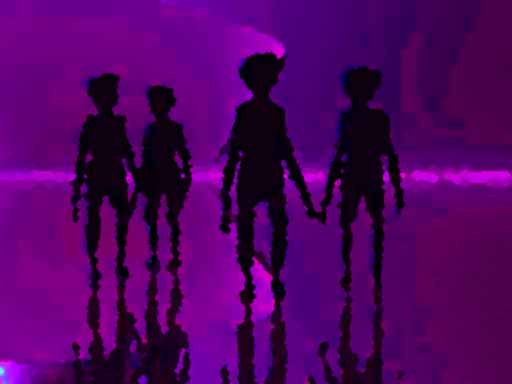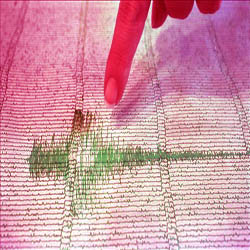Posted by PuertoMadero in Uncategorized | 0 Comentarios
Noticias, Hno. Danilo, 2/20/2012
Mt Fuji volcano (Japan):
signs of volcanic unrest reported
Saturday Feb 18, 2012 11:42 AM | Age: 2 days
BY: T
Reports are appearing about unrest and signs of a possible awakening of Mt Fuji
volcano in Japan.
According to a report which includes an unclear photo of the area, a row of new
craters, the largest 50 m in diameter, has appeared on the eastern flank of the
volcano at 2200 m elevation. Steam was observed erupting from these vents.
The observation joins other signs suggesting a gradual reawakening: A swarm of
earthquakes including 4 of magnitude 5 have occurred northeast of Mt Fuji on
and after 28 January. An earlier 6.4M quake occurred under the volcano on 15
March 2011. The report also mentions increased activity from a fumarole vent at
1500 m elevation and hot spring areas at the eastern flank observed since 2003.
These locations seem to be aligned geographically, and are probably connected.
Dr. Masaaki Kimura of Ryukyu University is quoted to admit that there is an
increased risk of and eruption on the eastern flank and that the status of the
volcano should be closely monitored.
TRADUCCION GOOGLE:
Volcán Monte
Fuji (Japón): signos de actividad
volcánica informó
Sábado 18 de febrero 2012 11:42 AM | Edad: 2 días
Por: T
Los informes están apareciendo sobre los disturbios y los signos de un posible despertar del volcánMonte Fuji en Japón.
De acuerdo con un informe que incluye una fotografía clara de la zona, una hilera de nuevos cráteres, el más grande de 50 m de diámetro, ha aparecido en el flanco oriental del volcán, en la cota 2200 m. El vapor se observó erupción de estas rejillas de ventilación.
La observación se une a otros signos que sugieren un gradual despertar: Un enjambre de sismos de los cuales 4 de magnitud 5 se han producido al noreste de Monte Fuji a partir del 28 de enero. Un terremoto de 6,4 M se produjo a principios de Bajo el volcán el 15 de marzo de 2011. El informe menciona tambiénuna mayor actividad fumarólica de un respiradero a 1500 m de altitud y las zonas de aguas termales en elflanco oriental se observa desde 2003.
Estos sitios parecen estar alineados geográficamente, y están conectados probablemente. El Dr. Masaaki Kimura de la Universidad de Ryukyu se cita a admitir que existe un mayor riesgo de erupción yen el flanco oriental y que el estado del volcán deben ser estrechamente monitorizados.
http://www.volcanodiscovery.com/view_news/5496/Mt-Fuji-volcano-Japan-signs-of-volcanic-unrest-reported.html
–
FBI might shutdown the Internet on March 8
Published: 15 February, 2012, 21:03
FBI might
temporarily end the Internet. (AFP Photo / Sonny Tumbelaka)
Millions of computer users
across the world could be blocked off from the Internet as early as March 8 if
the FBI follows through with plans to yank a series of servers originally
installed to combat corruption.
Last year, authorities in
Estonia apprehended six men believed responsible for creating a malicious
computer script called the DNSChanger Trojan. Once set loose on the Web, the
worm corrupted computers in upwards of 100 countries, including an estimated
500,000 in America alone. The US Federal Bureau of Investigation later stepped
up by replacing the rogue Trojan with servers of their own in an attempt to
remediate the damage, but the fix was only temporary. Now the FBI is expected
to end use of those replacement servers as early as next month and, at that
point, the Internet for millions could essentially be over.
When functioning as its
creators intended, the DNSChanger Trojan infected computers and redirected
users hoping to surf to certain websites to malicious ones. Traditionally, DNS,
or Domain Name System, servers translate alphabetical, traditional website URLs
to their actual, numeric counterpart in order to guide users across the World
Wide Web. Once infected by the DNSChanger Trojan, however, websites entered
into Internet browsers were hijacked to malicious servers and, in turn,
directed the user to an unintended, fraudulent site.
In coordination with the
arrests in Estonia, the FBI shut down the malicious DNSChanger botnet network,
and, additionally, replaced them with surrogate servers to correct the problem.
Those servers, however, were installed “just long enough for companies
and home users to remove DNSChanger malware from their machines,”
according to the court order that established them. That deadline is March 8,
and those surrogate servers are expected to be retired then. At that point,
computers still infected with the Trojan will be essentially unable to navigate
the Internet.
Who, exactly, will be
affected? Security company IID (Internet Identity) believes that half of all
Fortune 500 companies and more than two dozen major government entities in the
US are still currently infected with the worm as of early 2012. Unless they
take the proper steps to eradicate the Trojan from their systems, millions of
users worldwide will be left hog-tied, helplessly attempting to navigate to
nonexistent servers and, in effect, without the Web.
“At this rate, a lot of
users are going to see their Internet break on March 8,” Rod Rasmussen, president and chief
technology officer at Internet Identity, cautions Krebs On Security.
Currently, both the
computer industry and law enforcement are working together through a coalition
they’ve established called the DNSChanger Working Group. That group has been
tasked with examining the options in phasing out the surrogate servers set up
by the feds, but unless an alternative plan is agreed on, a great port of the
Web will go dark next month.
“I’m guessing a lot
more people would care at that point,” Rasmussen adds. While infected users are
cautioned to correct the problem now, millions internationally are still
believed to be infected. “It certainly would be an interesting social
experiment if these systems just got cut off,” he adds.
TRADUCION
GOOGLE:
FBI podría apagar el internet el 8 de marzo
Millones de usuarios de computadoras en todo el mundo podría ser bloqueado a
través de Internet tan pronto como 08 de marzo si el FBI sigue adelante con los
planes de dar un tirón a una serie de servidores instalados originalmente para
combatir la corrupción.
El año pasado, las autoridades de Estonia detenidos seis hombres que se cree
responsable de la creación de un script malicioso llamado equipo el troyano
DNSChanger. Una vez liberado en
el Web, el gusano dañado los ordenadores en más de 100 países, entre ellos unos
500.000 en Estados Unidos solamente. Los
EE.UU. Oficina Federal de Investigaciones tarde intensificado mediante la
sustitución de los troyanos pícaro con sus propios servidores en un intento de
remediar el daño, pero el arreglo fue sólo temporal. Ahora el FBI se espera que el uso
final de esos servidores de repuesto tan pronto como el próximo mes y, en ese
momento, la Internet para millones, esencialmente, podía ser mayor.
Cuando funcionan como sus creadores pretendían, el troyano infecta los
ordenadores y DNSChanger redirige los usuarios con la esperanza de navegar a
ciertos sitios web de los ‘malos’. Tradicionalmente,
DNS o Domain Name System, los servidores de traducir las direcciones URL por
orden alfabético, la página web tradicional a su contraparte real, numérica con
el fin de orientar a los usuarios a través de la World Wide Web. Una vez infectado por el troyano
DNSChanger, sin embargo, los sitios web que entró en los navegadores de
Internet fueron secuestrados a los servidores maliciosos y, a su vez, dirige al
usuario a un sitio no deseado, fraudulento.
En coordinación con las detenciones en Estonia, el FBI cerró el DNSChanger
maliciosos de la red botnet, y, además, los reemplazó con servidores sustitutos
para corregir el problema. Estos
servidores, sin embargo, se han instalado “sólo el tiempo suficiente para
las empresas y usuarios domésticos para eliminar el malware DNSChanger de sus
máquinas”, según el orden de la corte que los establezca. Esa fecha límite es el 08 de marzo, y
los servidores sustitutos se espera que luego se retiró. En ese momento, los equipos siguen
infectados con el troyano-espía es esencialmente incapaz de navegar en
Internet.
¿Quién, exactamente, se verá afectada? La
empresa de seguridad IID (identidad en Internet) considera que la mitad de
todas las compañías de Fortune 500 y más de dos docenas de entidades
gubernamentales más importantes en los EE.UU. todavía están actualmente
infectadas con el gusano a principios de 2012. A menos que se tomen las medidas
adecuadas para erradicar el troyano de sus sistemas, millones de usuarios en
todo el mundo se quedará Hog-Atado, sin poder hacer nada tratando de navegar a
los servidores que no existen y, en efecto, sin la Web.
“A este ritmo, muchos usuarios van a ver a su descanso de Internet el 8 de
marzo,” Rod Rasmussen, presidente y director de tecnología de identidad en
Internet, advierte Krebs on Security.
Actualmente, tanto la industria de la computación y la aplicación de la ley
están trabajando juntos a través de una coalición que se haya establecido
llamado el Grupo de Trabajo DNSChanger. Ese
grupo se ha encargado de examinar las opciones en la eliminación de los
servidores sustitutos creados por los federales, pero a menos que un plan
alternativo está de acuerdo en un gran puerto de la Web se apagará el próximo
mes.
“Supongo que mucho más el cuidado de las personas que en ese
momento”, agrega Rasmussen.Mientras que los usuarios infectados se
advierte a corregir el problema ahora, millones de personas a nivel
internacional todavía se cree estar infectado. “Sin duda, sería un experimento
social interesante si estos sistemas solo se cortó”, añade.
http://rt.com/usa/news/fbi-internet-server-servers-409/
































